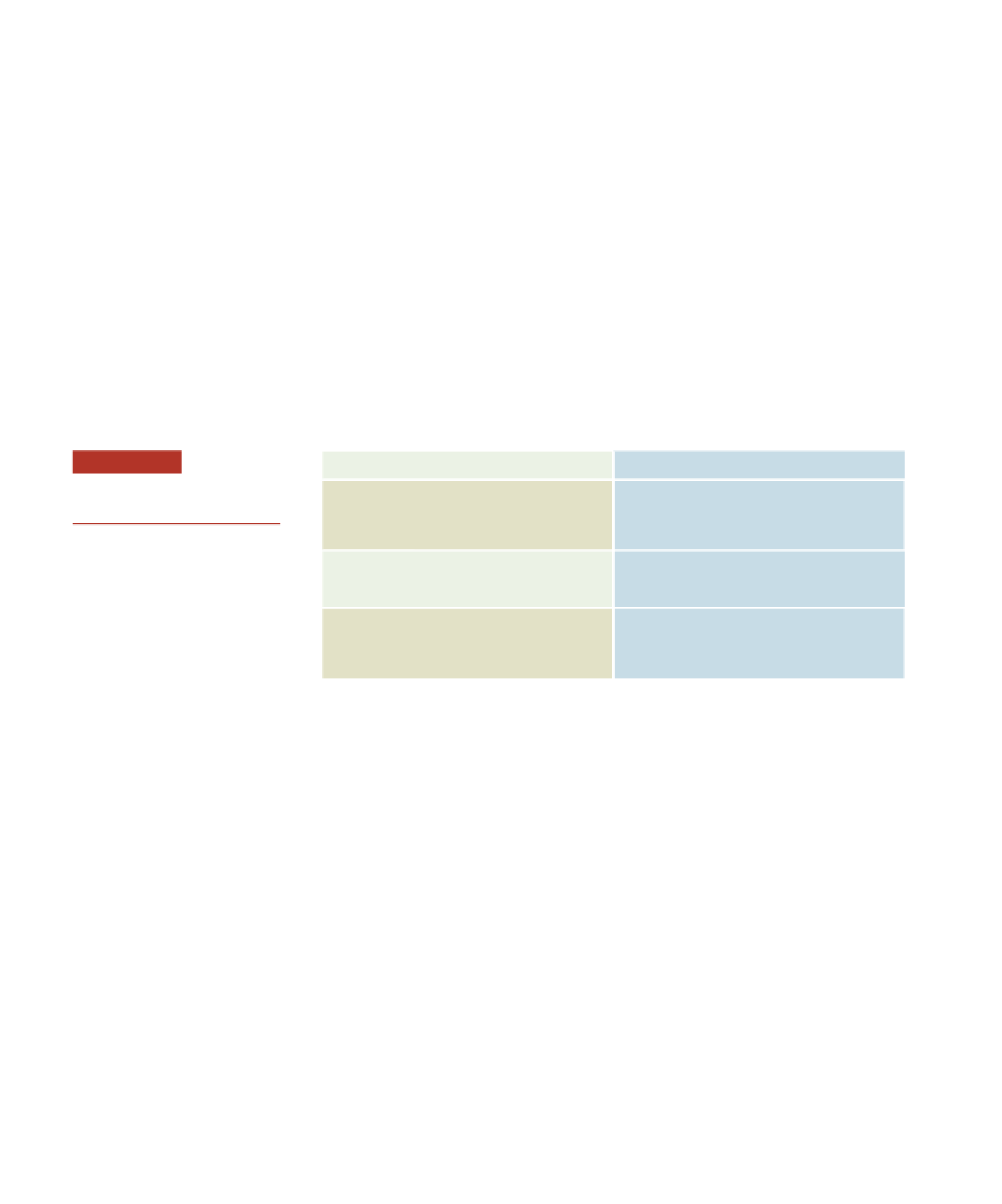Information Technology Reference
In-Depth Information
request into a message that the database server will understand. When it receives the message,
the database server extracts and formats the requested data and sends the results to the client.
The database server sends only the data that satisfies a specific query—not the entire file (see
Figure 6.9). As with the file server approach, when the downloaded data is on the user's
machine, it can then be analyzed, manipulated, formatted, and displayed by a program that
runs on the user's personal computer.
Figure 6.9
Server
Client
Client/Server Connection
Multiple computer platforms, called
servers, are dedicated to special
functions. Each server is accessible
by all computers on the network.
The client requests services from
the servers, provides a user
interface, and presents results to
the user.
Server
Client
Server
Table 6.3 lists the advantages and disadvantages of client/server architecture.
Table 6.3
Advantages
Disadvantages
Advantages and Disadvantages
of Client/Server Architecture
Moving applications from mainframe
computers and terminal-to-host architecture to
client/server architecture can yield significant
savings in hardware and software support costs.
Moving to client/server architecture is a major
two- to five-year conversion process.
Minimizes traffic on the network because only
the data needed to satisfy a user query is
moved from the database to the client device.
Controlling the client/server environment to
prevent unauthorized use, invasion of privacy,
and viruses is difficult.
Using client/server architecture leads to a
multivendor environment with problems
that are difficult to identify and isolate to the
appropriate vendor.
Security mechanisms can be implemented
directly on the database server through the use
of stored procedures.
Telecommunications Hardware
Networks require various telecommunications hardware devices to operate including
modems, multiplexers, front-end processors, private branch exchanges, switches, bridges,
routers, and gateways.
Modems
At each stage of the communications process, transmission media of differing types and
capacities may be used. If you use an analog telephone line to transfer data, it can only
accommodate an analog signal. Because a computer generates a digital signal represented by
bits, you need a special device to convert the digital signal to an analog signal, and vice versa
(see Figure 6.10). Translating data from digital to analog is called
modulation
, and translating
data from analog to digital is called
demodulation
. Thus, these devices are modulation/
demodulation devices, or
modems
. Penril/Bay Networks, Hayes, Microcom, Motorola, and
U.S. Robotics are modem manufacturers.
Modems can dial telephone numbers, originate message sending, and answer incoming
calls and messages. Modems can also perform tests and checks on how well they are operating.
Some modems can vary their transmission rates based on detected error rates and other
conditions. Cellular modems in laptop personal computers allow people on the go to connect
to wireless networks and communicate with other users and computers.
modem
A telecommunications hardware
device that converts (modulates
and demodulates) communications
signals so they can be transmitted
over the communication media.









